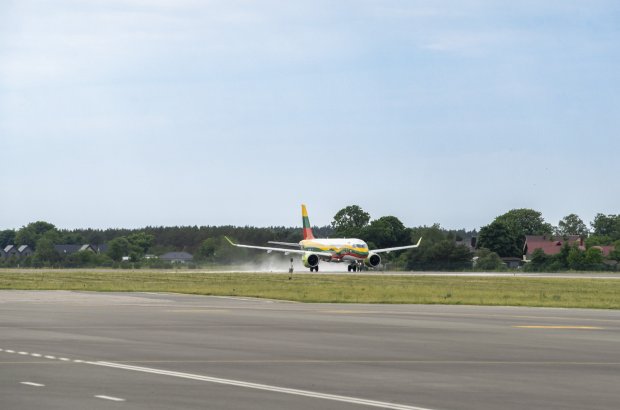Lithuanian Airports Lead the Baltics: Passenger Numbers Hit Record 3.3 Million in First Half of 2025

During the first six months of 2025, Lithuanian Airports (LTOU) served more than 3.3 million passengers – an increase of nearly 9% compared to the same period last year. This represents a continued record-breaking growth rate, with more passengers handled in the first half of 2025 than ever before during the same timeframe.
Passenger numbers increased at all three of Lithuania’s airports compared to the same period last year. The highest growth was recorded at Palanga Airport, which saw a 24% increase in passenger numbers. Kaunas Airport followed with almost 21% growth. At Vilnius Airport, the largest in the country, nearly 2.36 million passengers were served in the first half of the year – a 4.5% increase year-on-year.
The number of flights also rose by 6% during this period, with 28.5 thousand flights handled across the network. New routes were introduced, including Kaunas–Pescara, Vilnius–Bergen, Vilnius–Catania, Vilnius–Prague, Vilnius–Tirana, and Vilnius–Budapest. Additional frequencies were also added on strategically important routes such as Vilnius–Amsterdam, Vilnius–Tallinn, Vilnius–Brussels, Vilnius–Copenhagen, and Vilnius–Zurich.
Leadership Among Baltic States
Lithuania’s airport network remains the leader among the Baltic countries in terms of both first-half and June passenger volumes.
In the first half of the year, 40.3% of all Baltic air passengers travelled through Lithuanian airports. In comparison, Riga Airport handled 40.1% (3.3 million passengers) and Tallinn Airport – 19.6% (1.6 million). Both neighboring countries’ airports recorded declining passenger numbers in June compared to the same period in 2024.
In contrast, in June alone, Vilnius, Kaunas, and Palanga airports together served 667,000 passengers, a 2.1% increase year-on-year.
“We are pleased with the performance of Lithuanian Airports and our continued leadership in the Baltic region. Notably, we’re seeing the growing role of regional airports – Palanga, for instance, has posted the highest passenger growth. Flights to Antalya are already operating, and we are working to expand leisure destinations even further – with flights to Egypt from Palanga expected to begin this autumn. Capital cities in other countries are also increasingly important – with new Vilnius routes launched to Prague, Tirana, and Budapest, and a new Kaunas route to Pescara. Modern infrastructure, new destinations, and steadily improving service quality make our airports increasingly attractive for both passengers and travel organizers,” – says Minister of Transport Eugenijus Sabutis.
Breakthrough in Air Connectivity Quality
The latest report by ACI Europe (Airports Council International) highlights that Lithuania improved its indirect connectivity index by 20% – meaning it is now significantly easier to plan connecting flights from Lithuania compared to last year. Lithuania ranks third among all European countries for growth in indirect connectivity.
According to ACI Europe, only about one-third of European countries have managed to regain their pre-pandemic (2019) positions. Lithuania, however, not only recovered its passenger flows but also successfully pivoted toward Western markets, enhancing both direct and indirect connectivity. As a result, Lithuanian Airports continue to strengthen their leadership in the Baltic region – in 2024, a record 6.6 million passengers were served across the network.
The report data show that indirect connectivity in Lithuania has grown by 5% compared to pre-pandemic levels, which experts interpret as a full recovery of this segment and a positive trend that remains an exception in the broader European context.
When comparing 2024 to 2025 data, a 20% surge in indirect connectivity was observed in Lithuania. Overall, Lithuania ranks 3rd out of 31 European countries in this category. Estonia ranks 7th, and Latvia 15th. In parallel, direct connectivity in Lithuania also grew by 3% over the past year.


